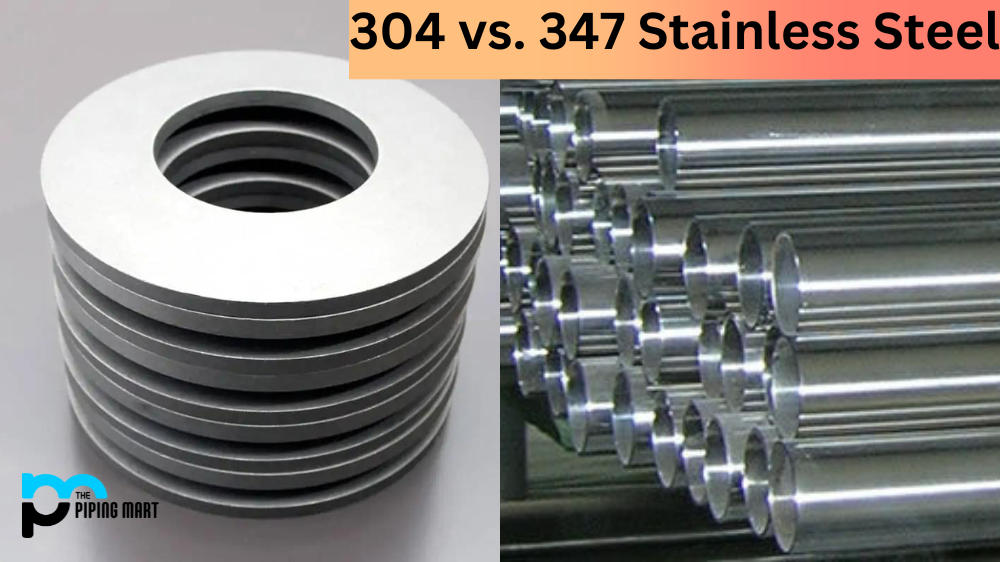When it comes to choosing the right type of stainless steel for your project, two of the most popular options are 304 stainless steel and 347 stainless steel. Both are austenitic steels, meaning they come from a family of chromium-nickel alloys that provide excellent corrosion resistance. But what makes them different? Let’s take a closer look at these two types of stainless steel to help you decide which one is right for your project.
304 Stainless Steel
304 stainless steel is often considered the standard when it comes to austenitic steels and is widely used in many industries. It provides excellent corrosion resistance and is relatively easy to form and weld. Its unique composition also makes it resistant to extreme temperatures, both hot and cold, so it’s ideal for applications with high heat or extreme cold. It’s also non-magnetic and has great mechanical properties, making it a great choice for many projects.
347 Stainless Steel
347 stainless steel has many benefits over 304 stainless steel, but its main advantage lies in its ability to withstand higher temperatures without losing its strength or becoming brittle. This makes it an excellent choice for applications in extreme temperatures like turbines or boilers where the temperature can exceed 1000°F (537°C). It also offers greater resistance to corrosion than 304 stainless steel due to its higher concentration of chromium, nickel, molybdenum, titanium, and aluminium content. Additionally, 347 stainless steel is non-magnetic and offers good ductility (it can be easily formed into various shapes).
Difference between 347 stainless steel and 304 stainless steel
Chemical Composition
The main difference between 347 stainless steel and 304 stainless steel is the composition. 347 stainless steel contains columbium, which is a chemical element that helps to stabilize the alloy. 304 stainless steel does not contain columbium, but it does contain more chromium than 347 stainless steel.
Corrosion Resistance
Both 347 stainless steel and 304 stainless steel are highly corrosion resistant. However, 304 stainless steel is slightly more corrosion-resistant than 347 stainless steel. This is due to the addition of columbium to 347 stainless steel, which helps to improve its resistance to corrosion.
Heat Resistance
347 stainless steel has better heat resistance than 304 stainless steel. This is due to the addition of columbium to the alloy, which helps to stabilize it at high temperatures. 304 stainless steel is still able to withstand high temperatures, but it may suffer from some degree of scaling at temperatures above 1600 degrees Fahrenheit.
Temperature Range
The temperature range for both 347 stainless steel and 304 stainless steel is -320 to +1500 degrees Fahrenheit. However, the temperature range for 347 stainless steel is slightly wider than that of 304 stainless steel, as it can be used at temperatures up to 1650 degrees Fahrenheit without suffering from scaling.
Formability
Both 347 stainless steel and 304 stainless steel are highly formable. However, 304 stainless steel is slightly more formable than 347 stainless steel due to its lower carbon content.
Weldability
Both 347 stainless steel and 304 stainless steel are weldable. However, 347 Stainless Steel is slightly more weldable than 304 Stainless Steel because of its lower carbon content.
Cost
The cost of 347 Stainless Steel vs 304 Stainless Steel varies depending on the supplier and the market conditions. Generally speaking, 347 Stainless Steel is slightly more expensive than 304 Stainless Steel because of its higher chromium content and unique properties.
Conclusion:
Both 304 and 347 stainless steels have their own unique advantages depending on your application needs. If you need a material with good corrosion resistance that can withstand high temperatures without losing its strength, then 347 may be the best option; however, if you need a more general-purpose material with great mechanical properties, then 304 should suffice. Ultimately the decision between these two materials comes down to understanding your specific application requirements so that you can choose the right material for the job!

Meet Bhavesh, a seasoned blogger with a wealth of knowledge and experience. From metal products manufacturing to retail, Bhavesh has a diverse background in various industries and is dedicated to sharing his insights and expertise with readers.




